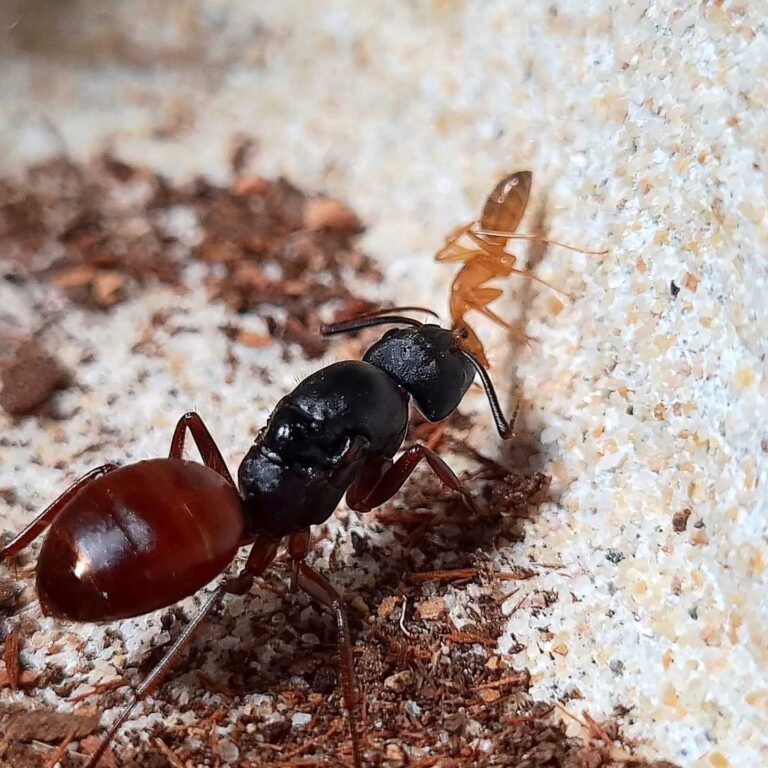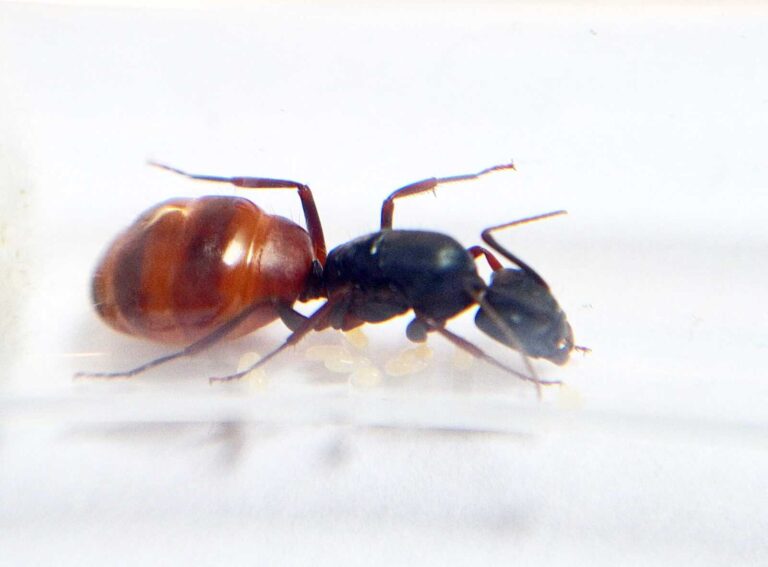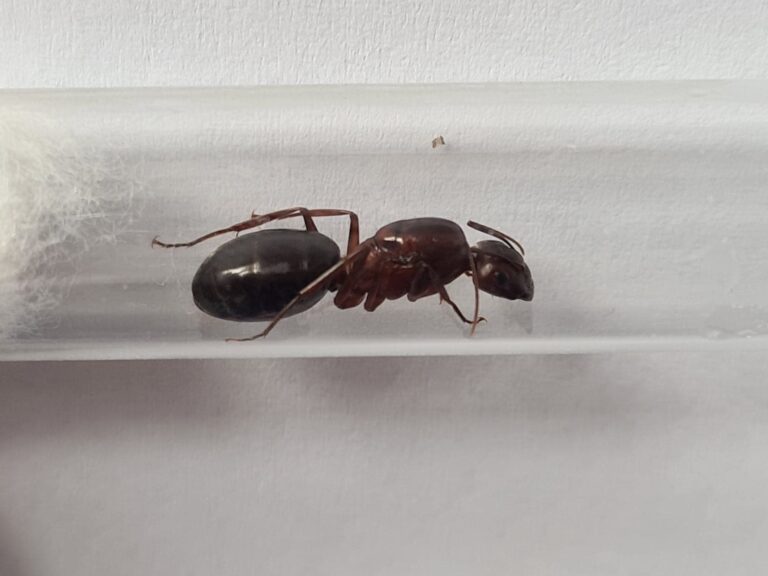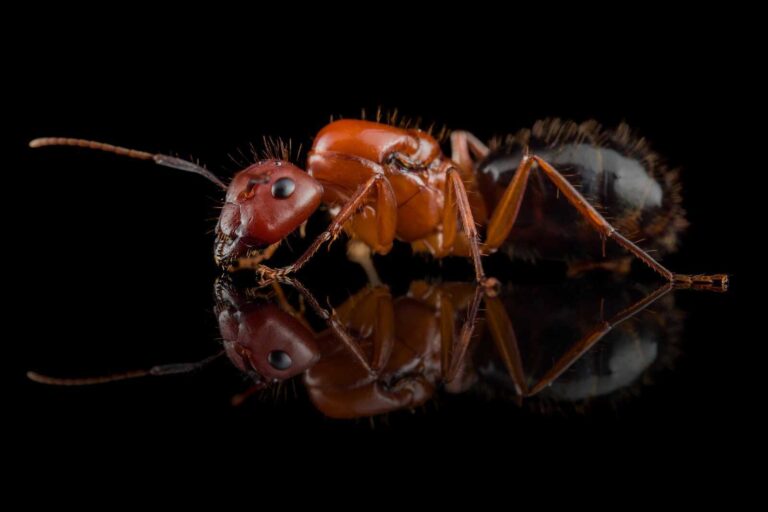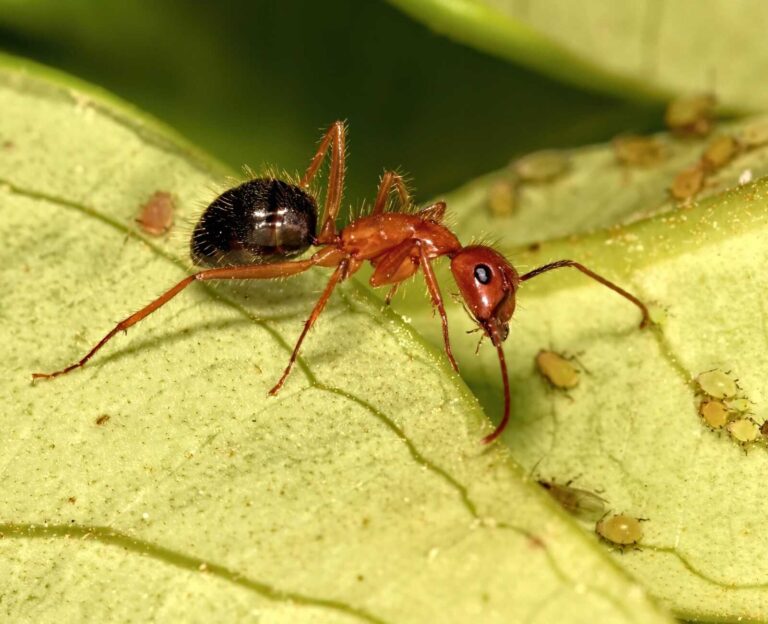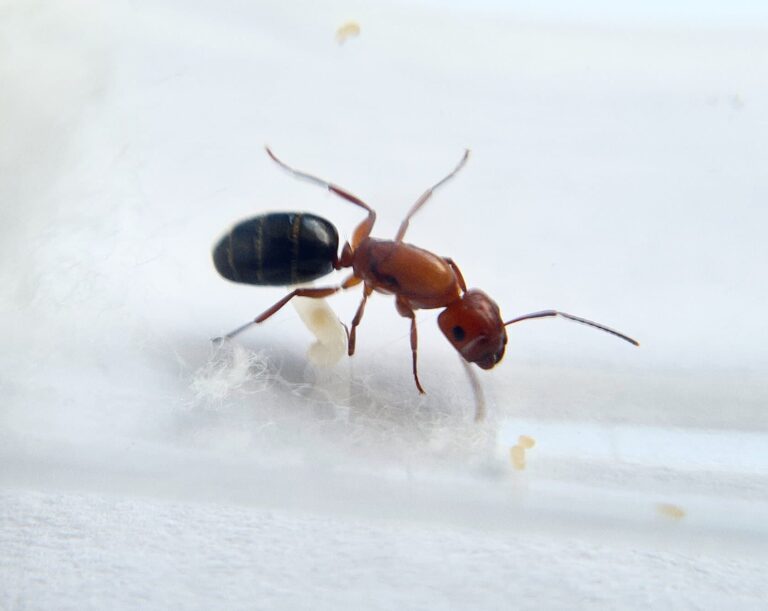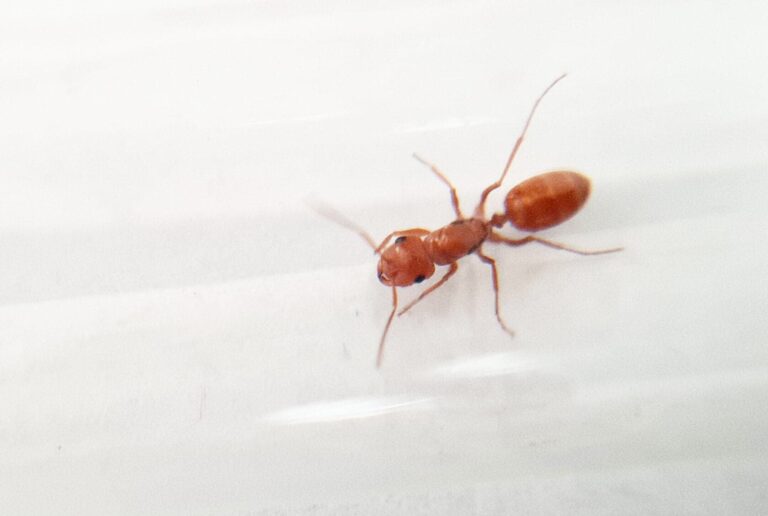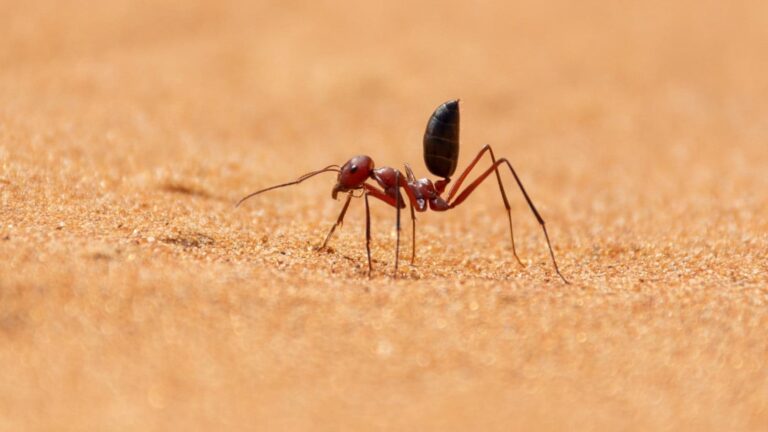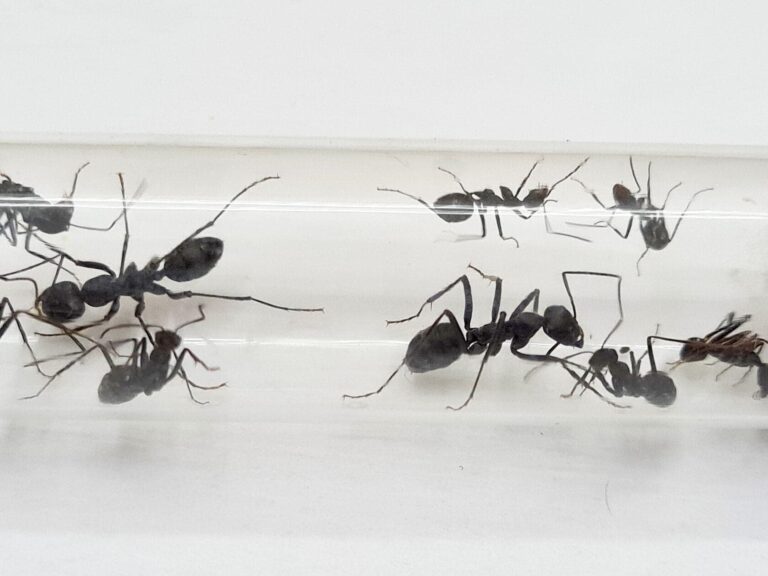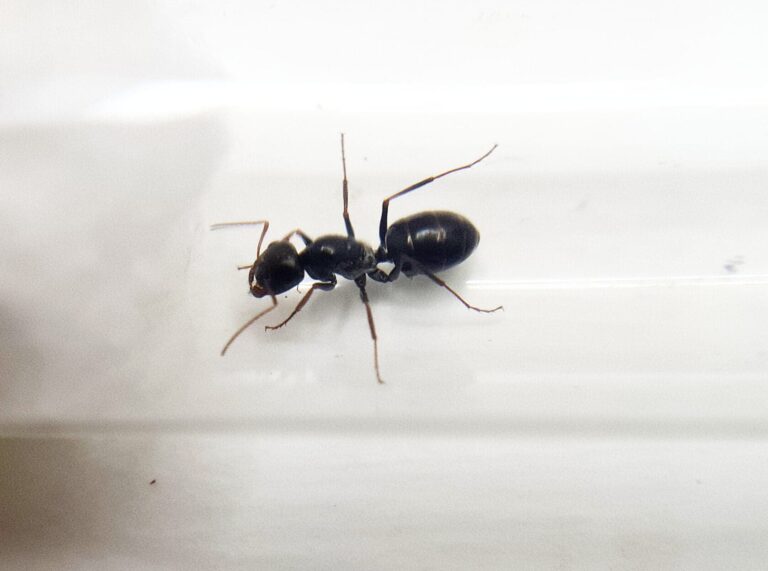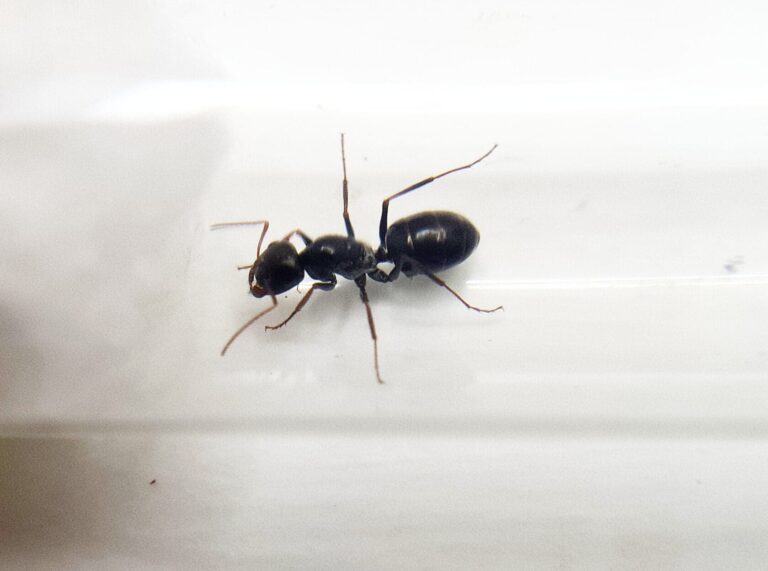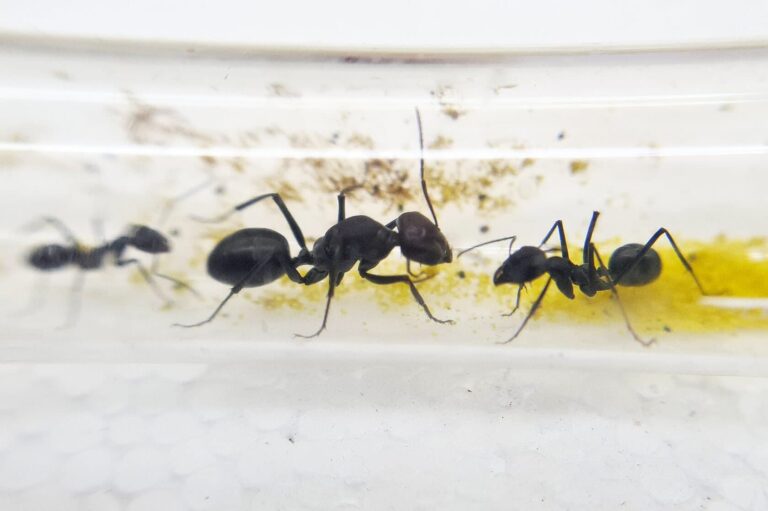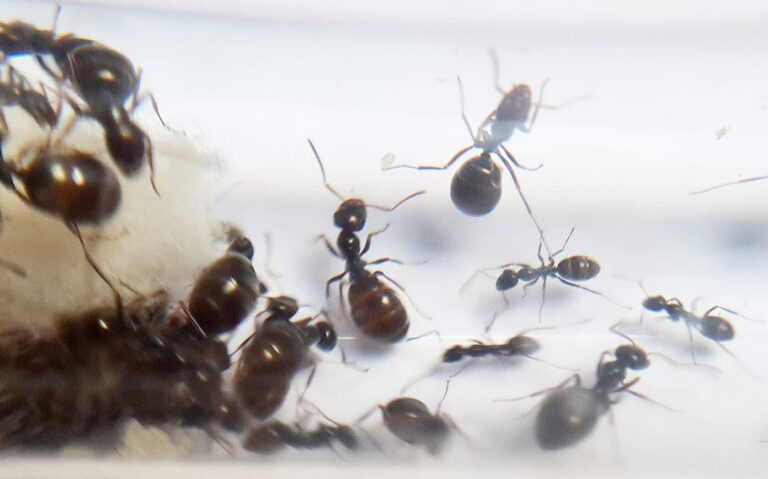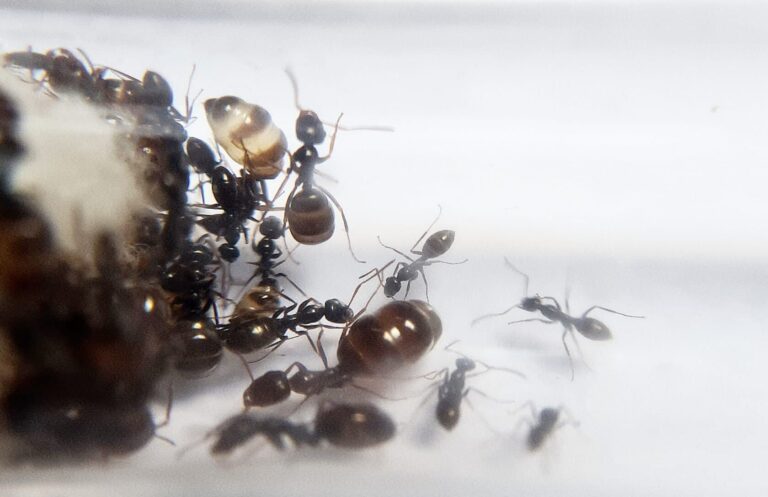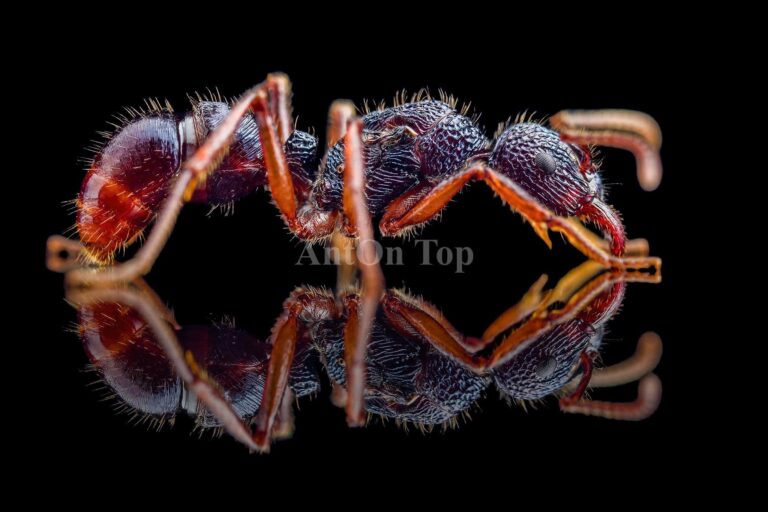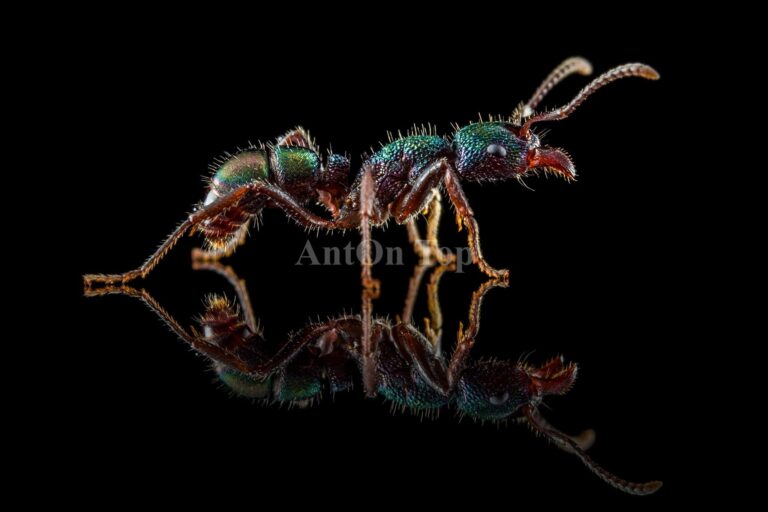Showing all 15 results
- Queen 15
- Queen and 1-3 workers 14
- Queen and 4-10 workers 14
- Queen and 11-20 workers 14
- Queen and 21-40 workers 14
- Queen and 41-60 workers 14
- Queen and 61-100 workers 12
- Queen and 101-200 workers 1
- 2 Queens 1
- 2 Queens and 1-3 workers 1
- 2 Queens and 4-10 workers 1
- 2 Queens and 11-20 workers 1
- 2 Queen and 21-40 workers 1
- 2 Queens and 41-60 workers 1
- 2 Queens and 61-100 workers 1
Camponotus CA02 is a monogynous ant colony with a medium development speed. The colony can have up to 5000 workers. The queen measures 19-23 mm, workers measure 7-14 mm, and majors measure 14-22 mm. They have a black head and chest with an orange-yellow belly. Their nutrition includes insect food, syrup, fruits, vegetables, and jelly.
The Camponotus turkestanicus is a monogynous ant species with colony sizes of up to 2000 workers. They have a medium development rate and their queen measures 12-14 mm, while workers measure 7-12 mm. They are brown in color and their diet consists of food insects, syrup, fruits, vegetables, jelly, and cooked chicken without salt.
Camponotus floridanus is a monogynous ant species with a colony size ranging from 5,000 to 20,000 workers. They have a very fast development speed. The queen ant is 14-17 mm in size, while the workers range from 4-9 mm and majors are 11-13 mm. They have a distinct coloration with a reddish-orange head, bright orange mesosome and legs, and deep black punctuation. Their nutrition consists of food insects.
Camponotus sayi is a species of ant with a monogynous colony type and a slow development speed. The colony can have up to 5,000 workers. The queen is 12-13 mm in size, workers are 4-7 mm, and majors are 9-12 mm. They have an orange-red head and chest, and a shiny black belly. Their nutrition includes food insects, syrup, fruit, and vegetables.
The Cataglyphis arenarius is a polygynous ant species with colonies of up to 5000 workers. They have a very fast development speed and come in sizes of 9-11mm for queens and 4-9mm for workers. They have a light orange color and their diet consists of food insects, syrup, fruit, vegetables, jelly, and cooked chicken without salt.
Cataglyphis bicolor is a polygynous ant species with colony sizes up to 5000 workers. They have a very fast development speed. The queen measures 9-11 mm, workers 4-9 mm, and majors 8-11 mm. They are reddish brown with a black abdomen. Their diet includes insect food, syrup, fruit, vegetables, jelly, and cooked chicken.
Cataglyphis hispanica is a polygynous ant species with colony sizes of up to 20,000 workers. They have a very fast development speed. The queen measures 12-16 mm, while workers measure 7-16 mm. They are black in color with a red head. Their diet consists of food insects, syrup, fruits, vegetables, jelly, and cooked chicken without salt.
Cataglyphis isis is a polygynous ant species with a colony size of up to 5000 workers. They have a very fast development speed. The queen measures 9-11 mm in size, while workers range from 4-9 mm. They are characterized by their red color and slightly yellow legs. Their nutrition consists of food insects, syrup, fruits, vegetables, jelly, and cooked chicken without salt.
The Cataglyphis nodus is a species of ant with a polygynous colony type and a fast development speed. The colony can have up to 5000 workers and the ants range in size from 15-18 mm for the queen and 5-15 mm for the workers. They have a dark red color and their nutrition consists of food insects, syrup, fruit, vegetables, jelly, and cooked chicken without salt.
Cataglyphis savignyi is a polygynous ant species with colony sizes up to 10,000 individuals. They have a very fast development speed and range in size from 16-21 mm for the queen and 5-17 mm for the workers. These reddish brown ants primarily feed on food insects, syrup, fruits, vegetables, jelly, and cooked chicken without salt.
Cataglyphis velox is a polygynous ant species with colonies consisting of up to 5000 workers. They have a very fast development speed. The queen ant has a size of 13-17 mm, while the workers range from 5-15 mm. Their color is red with a black abdomen. They primarily feed on food insects such as cockroaches and crickets, as well as syrup, fruit, vegetables, jelly, and cooked chicken without salt.
Proformica ferreri is a monogynous ant species with a colony size of up to 1000 workers. They have a medium development rate and the queen measures 9-11 mm while the workers measure 3-10 mm. They are black in color and their nutrition consists of food insects, syrup, and fruit. They require a humidity level of 60-80% in the arena and 60-70% in the nests.
Proformica nasuta is a monogynous ant species with a colony size of up to 1000 workers. They have a medium development rate, with queens measuring 9-11 mm and workers measuring 3-10 mm in size. The ants are dark brown in color and their diet includes food insects, syrup, and fruit. They thrive in arenas with a humidity level of 60-80%, while their nests require a humidity level of 60-70%.
Rhytidoponera chalybeae is a monogynous ant species. The colony size can reach up to 500 workers, and their development rate is medium. The queen measures 7-8mm, while the workers measure 4-7mm. The ants have an iridescent purple orange-red color, with dark purple being dominant. Their nutrition consists of food insects, syrup, fruit, vegetables, jelly, and coconut water.
Rhytidoponera metallica is a monogynous ant species with colony sizes reaching up to 300 workers. They have a medium development rate and vary in size, with queens measuring 6-8 mm and workers measuring 4-7 mm. These ants have a distinctive green-purple color and their nutrition includes food insects, syrup, fruits, vegetables, jelly, boiled chicken, and nuts.


